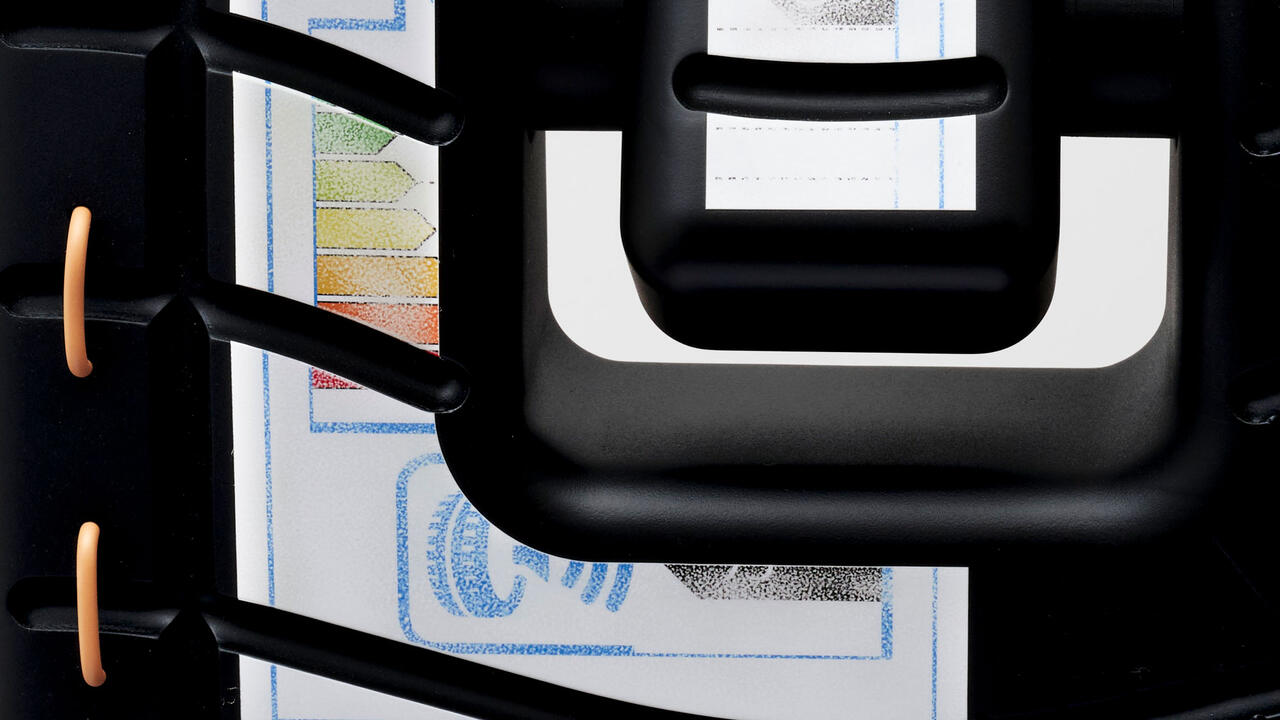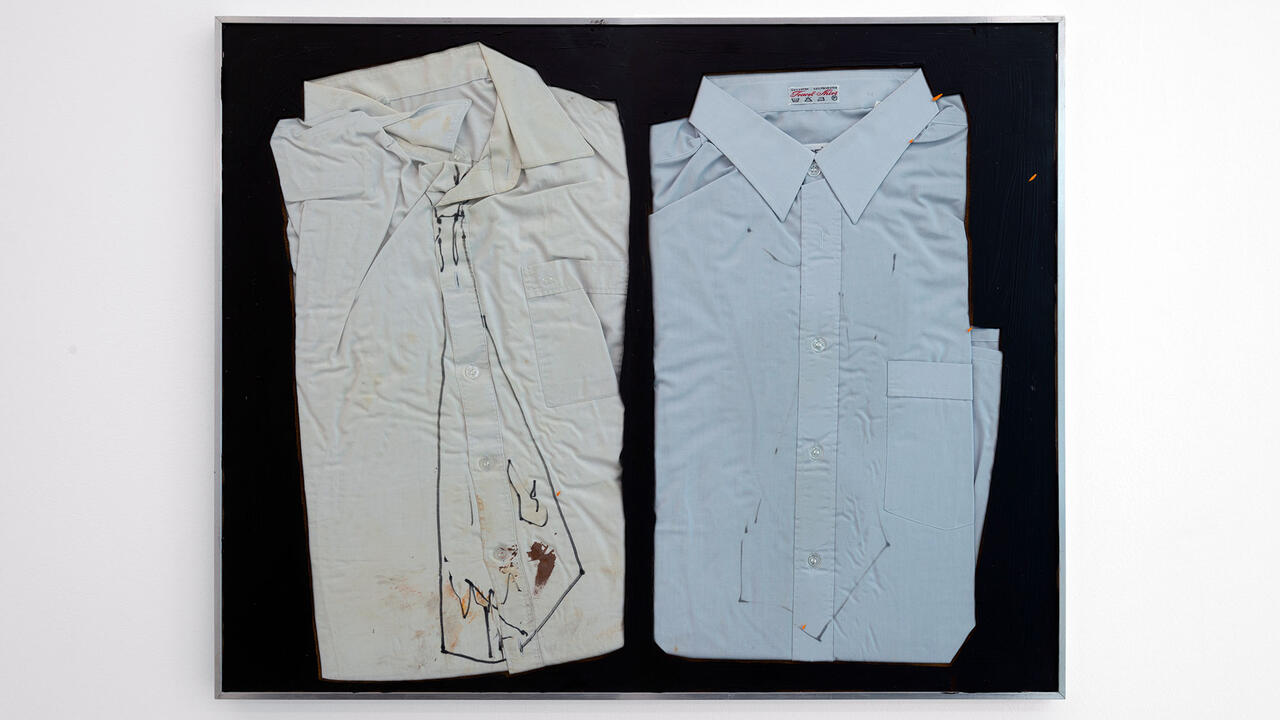Jessie Flood-Paddock

A bright blue arc, the exact colour of one of Henri Matisse’s Blue Nudes (1952), decorated the glass door of Carl Freedman Gallery, while a series of cavorting blue curves on the left-hand wall drew you inside. In the gallery were ten new works by British artist Jessie Flood-Paddock – sculptural ‘nudes’ that appeared to be held in various states of suspense. The choreography of the display encouraged the viewer (a term that suggests our eyes wander unaccompanied) to have a degree of bodily awareness. The first work, for example, involved a negotiation more than an encounter: Nude Wood (all works 2014) was comprised of seven spindly polystyrene ‘trunks’ hanging from a steel cable spanning the room, creating a threshold to be crossed. The playful title of the work, suggesting a traditional wooden carving or a naturist scene, was at odds with these flimsy forms, which were flecked like marble but unmistakably synthetic. The work raised the supposed antinomy between the natural and the artificial, a debate as old as Aristotle that has been revived lately by artists such as Nicholas Deshayes and Juliette Bonneviot in work that incorporates and interrogates plastic materials.
Although Flood-Paddock has been a regular presence at Carl Freedman Gallery (last summer she curated the group show ‘£5.34’ and was included in the exhibition ‘Frauge’ in 2012) this was her first solo exhibition there in three years. The title, ‘Nude’, belongs to a (real) skincare company that proudly offers ‘unique formulas based on ingredients the body needs and understands’. Their logo, a square in which the letter ‘u’ is rotated in each quadrant to spell out ‘nude’, was reconfigured in the largest work on display, which was positioned centre-stage. The translation of the brand’s sleek visual identity into three dimensions was brilliantly unseemly. In crushing the neatness of the graphic designer’s logo, Flood-Paddock addressed the irony of marketing ‘natural’ beauty products while alluding to the tradition of idealizing beauty through the female nude. The plump form brought to mind the pantheon of prostate corpulent women depicted in art, while the bare plaster seemed to reference the history of feminist artists, such as Louise Bourgeois, whose handling of materials expressed the (psychological as much as physiological) messiness of bodily being.
In Jute Nude, a layer of epoxy resin has been applied to an oval piece of jute to create a glossy herringbone finish. The work is reminiscent of the textures created by Eva Hesse using liquid latex and cheesecloth to create skin-like surfaces that look as if they could bristle. Hesse once described how she was drawn to ‘the most absurd and extreme contrasts’ rather than ‘something normal with just the right height and proportions’ – a statement that is certainly also true of Flood-Paddock. Her show ‘Gangsta’s Paradise’ at the Hayward Project Space in 2010 featured a giant lobster amid a sky-scene inched from The Truman Show (1998), while ‘Fantastic Voyage’ in 2011 involved a massive New Era 59Fifty baseball cap that dominated Carl Freedman Gallery. In 2013, Flood-Paddock proposed her most monumental work yet: Tsz, Tsz, Tsz, shortlisted for the Artangel Open, would have been a sculpture that straddled the A40, modelled on the aluminium headphones that accompanied the first Sony Walkman. By comparison, ‘Nude’ inevitably felt both modest and a work-in-progress.
Thankfully, the gallery text recognized this: while the main sculpture, Nude, was described as ‘the foundation stone of the show’, the others pieces were classed as ‘a departure’ reflecting a period of ‘lengthy and repeated mental modelling’. Commercial spaces are often reluctant to explicitly acknowledge a hierarchical relationship between different works in an exhibition (the price list can sometimes be more informative in this respect) and it is a welcome change when they do, unburdening the viewer to appreciate preliminary pieces as sites of formal and conceptual experiment. It’s particularly important for Flood-Paddock, who has long been interested in the idea of a provisional aesthetic. Like Phyllida Barlow (her former tutor) she often works in lightweight materials, such as cardboard or fibreboard, which reflect a consumer society in which little lasts for long. In the context of an exhibition inspired by the hollow rhetoric of ‘natural beauty’, it felt all the more essential that the artist should bare all.














